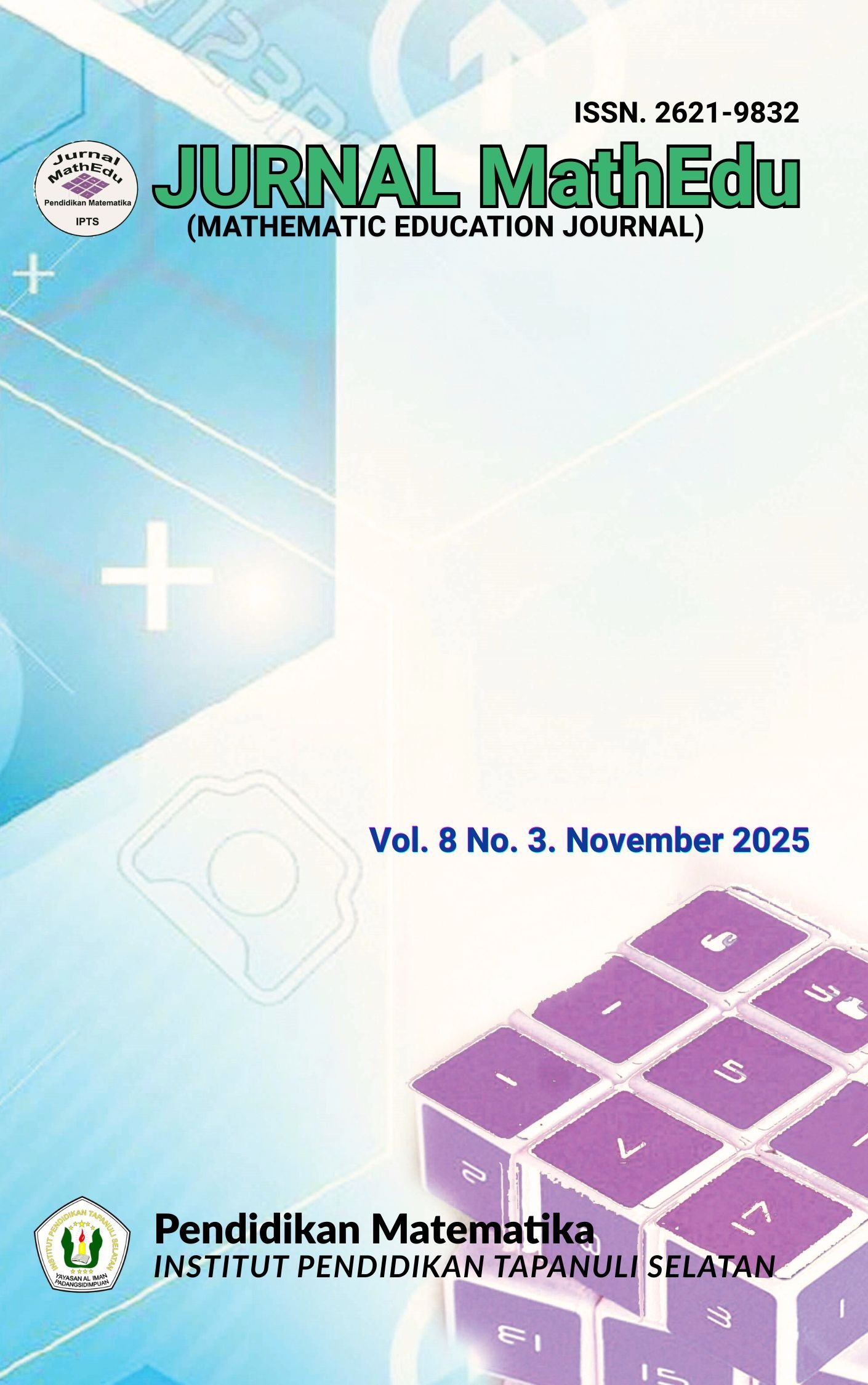MOTIVASI BELAJAR SISWA SMA NEGERI 1 PADANG BOLAK DI ERA DIGITAL: ANTARA TANTANGAN DAN PELUANG
Main Article Content
Abstract
The development of digital technology has significantly transformed the field of education, particularly at the
senior high school level. On one hand, technology offers great potential to enhance student learning motivation
through broad access to information, interactive media, and flexible learning schedules. On the other hand,
digital disruption also presents challenges such as social media distractions, visual fatigue, and unequal
access to technology. This study aims to identify the factors that influence students’ learning motivation in the
digital era and formulate strategies to optimize the use of technology in education. Employing a descriptive
quantitative approach, a survey was conducted involving 72 science-track students at SMA Negeri 1 Padang
Bolak. The ARCS model (Attention, Relevance, Confidence, Satisfaction) served as the analytical framework
to assess student motivation. The results show that 70.8% of students reported increased motivation with the
aid of digital technology, especially in the areas of attention and satisfaction. However, 55.5% admitted being
distracted by social media, while 48.6% experienced fatigue due to prolonged screen exposure. The study
recommends the integration of technology-based pedagogy, the strengthening of digital literacy, and
proportional supervision of digital device use to foster effective, meaningful, and motivating learning
experiences
Article Details
Authors who publish with this journal retain copyright to their articles. However, they grant the journal the right of first publication with the work simultaneously licensed under a Creative Commons Attribution License that allows others to share the work with an acknowledgment of the work's authorship and initial publication in this journal.
References
Education, 15(2), 112–126.
Keller, J. M. (2010). Motivational Design for Learning and Performance: The ARCS Model Approach.
Springer.
Keller, J. M., & Suzuki, K. (2004). Learner motivation and e-learning design: A multinationally validated
process. Journal of Educational Media, 29(3), 229–239.
Shroff, R. H., Deneen, C. C., & Ng, E. M. W. (2022). Student satisfaction and engagement in digital learning
environments. Education and Information Technologies, 27(8), 11291–11312.
Tang, Y., Ma, T., & Zhao, J. (2021). Digital mindfulness and attention management in e-learning. Computers
in Human Behavior, 125, 106957.
Zakaria, N. (2023). Localization in Digital Learning: Aligning Global Content with National Curriculum.
Asian Journal of Education Research, 11(4), 221–235.eci, E. L., & Ryan, R. M. (2000). Intrinsic
motivation and self-determination in human behavior. Springer.
Harris, T. (2023). The attention economy: How media and algorithms control minds. MIT Press.
Keller, J. M. (2010). Motivational design for learning and performance: The ARCS model approach. Springer.
Kementerian Pendidikan, Kebudayaan, Riset, dan Teknologi. (2022). Statistik pendidikan digital 2020–2022.
Pusat Data dan Teknologi Informasi (Pusdatin), Kemdikbud.
Rosen, L. D., Carrier, L. M., & Cheever, N. A. (2021). Digital distraction: Psychological impacts of digital
device usage in educational settings. Journal of Educational Psychology, 113(4), 745–760.
https://doi.org/10.xxxx/xxxxx (Catatan: Ganti dengan DOI asli jika tersedia)
Twenge, J. M., Spitzberg, B. H., & Campbell, W. K. (2022). Decreases in psychological well-being among
American adolescents after 2012 and links to screen time during the rise of smartphone technology.
Computers in Human Behavior, 135, 106761. https://doi.org/10.1016/j.chb.2022.106761
UNESCO. (2023). Global education monitoring report 2023: Technology in education. United Nations
Educational, Scientific and Cultural Organization. https://www.unesco.org/reports/global-educationmonitoring-report/2023
van Dijk, J. A. G. M. (2020). The digital divide. Polity Press.
Zakaria, R. (2023). Localizing digital content in Indonesian education: Between curriculum relevance and
global access. Journal of Southeast Asian Education Studies, 14(1), 34–49.

